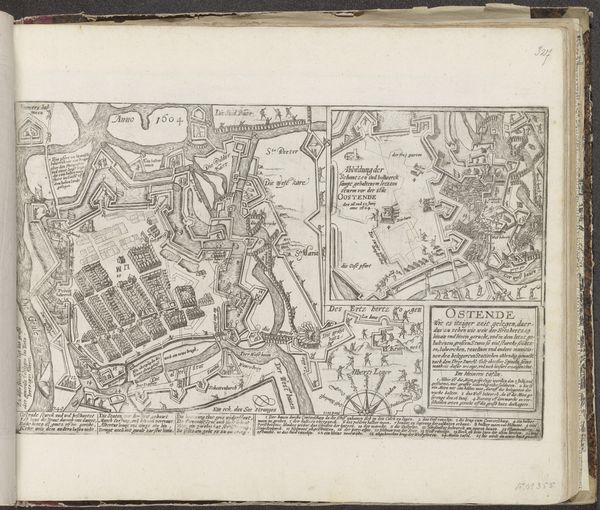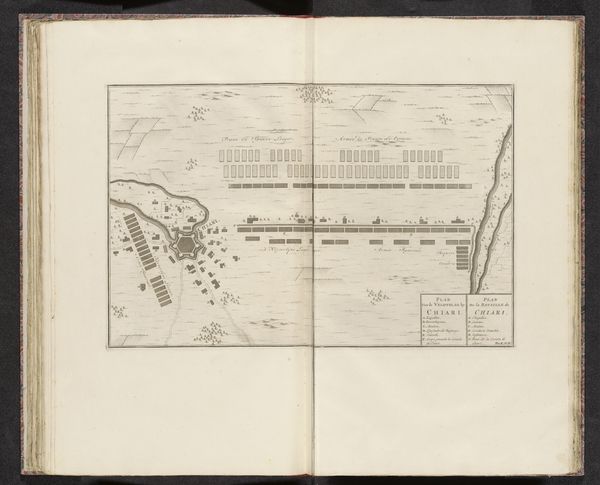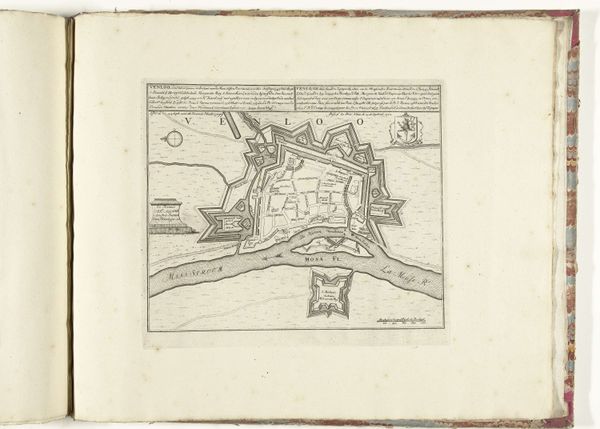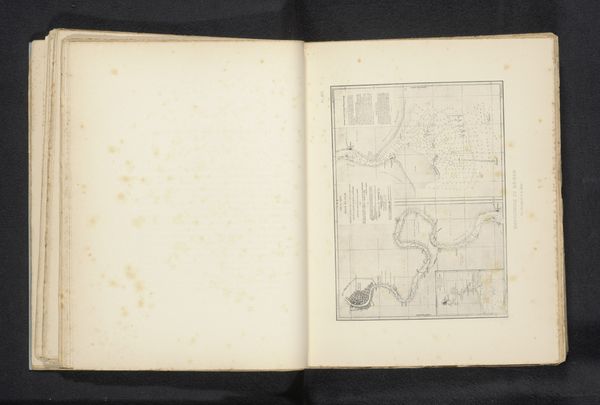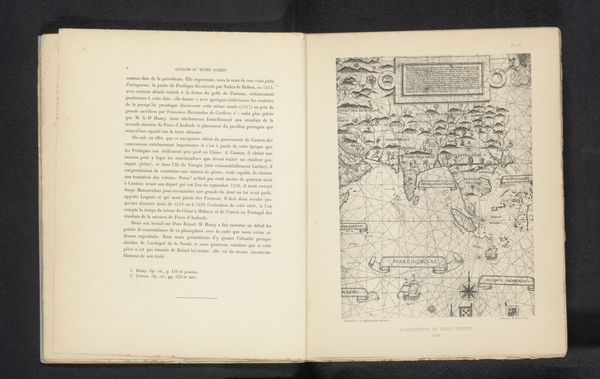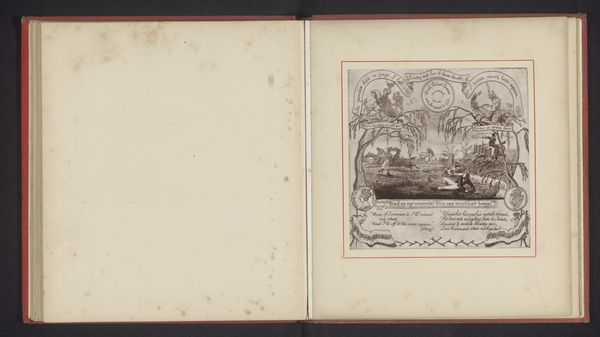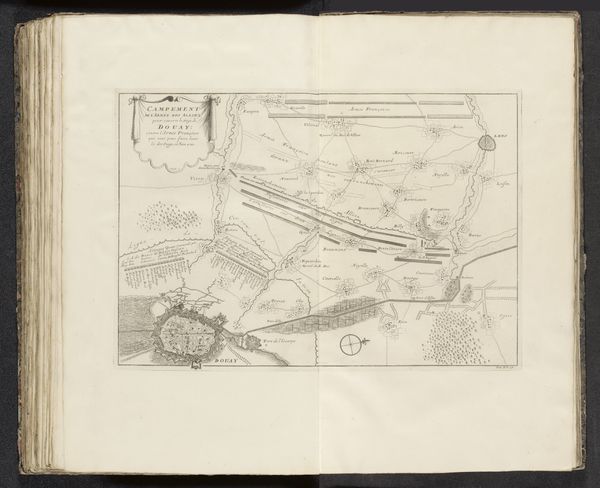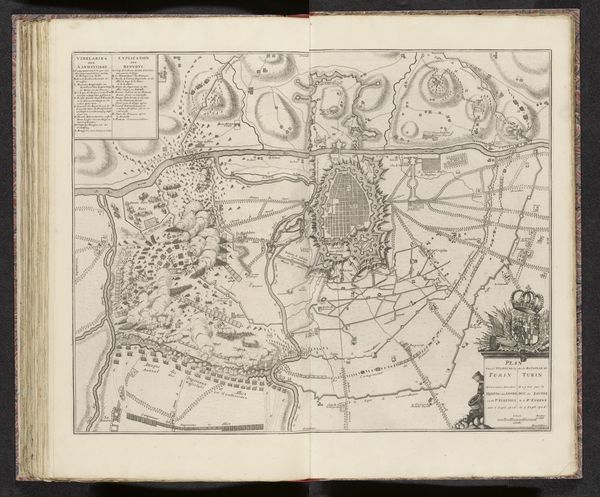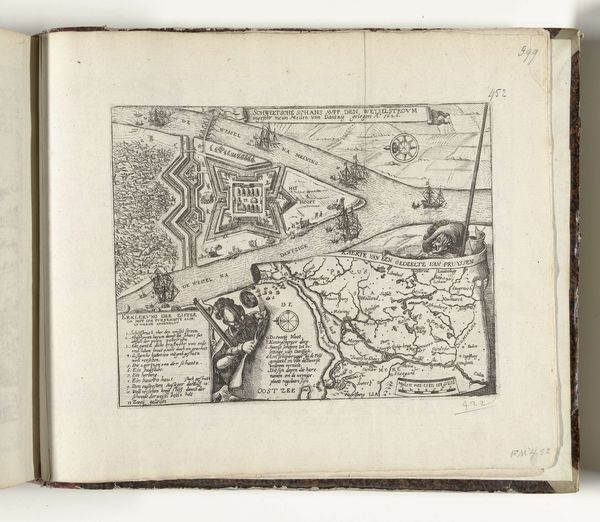
drawing, print, paper, ink, engraving
#
drawing
#
baroque
# print
#
paper
#
ink
#
geometric
#
line
#
cityscape
#
history-painting
#
engraving
Dimensions: height 317 mm, width 490 mm
Copyright: Rijks Museum: Open Domain
Curator: Welcome. We are looking at "Slag bij Wijnendale, 1708," an engraving on paper rendered in ink. It depicts a bird’s-eye view of a battlefield landscape. The print is attributed to Pieter van (II) Call and resides here at the Rijksmuseum. Editor: The meticulous detail is remarkable, like an architect's plan. Yet, the grid-like forest and rigid troop formations convey a sense of forced order amidst the chaos that battle must embody. It almost feels like a critique of military planning, perhaps? Curator: Indeed, these battle plans, widespread at the time, often served more as political tools than accurate records. Prints like these provided visual propaganda, shaping public opinion regarding conflicts and military prowess. They often conveniently overlooked the grim realities of warfare. Editor: Propaganda, of course, then as now, serves power. Note the carefully lettered descriptions. They amplify the narrative of victory but also subtly remind us of those in command and those sacrificed. The absence of emotional rendering humanizes the colonizers’ experience, pushing down any resistance to imperial expansion. Curator: These battle plans, while seemingly objective, were intrinsically linked to colonial ambitions. The representation of landscape also bears remembering. Land was often visually appropriated before physical possession. These prints became vital tools in staking territorial claims and justifying military actions within larger European geopolitical conflicts. Editor: And, of course, what this bird's-eye perspective omits. There is no sense of scale or of the experiences of the individual soldier or the inhabitants of that land. They are simply geometric marks on a strategic map, easily erased, easily dismissed. Even the seemingly objective is fraught with politics of extraction and dehumanization. Curator: That’s a very potent reminder to unpack how artworks, even something seemingly as documentary as this engraving, function within circuits of power, reflecting and reinforcing existing socio-political hierarchies. The image reveals its time and reveals much about us as observers also. Editor: Precisely. Confronting these omissions compels us to engage in critical analysis of the role that such prints and artworks had, and continue to have, in perpetuating specific viewpoints while eclipsing others, so easily pushing people aside through the lines they put on paper.
Comments
No comments
Be the first to comment and join the conversation on the ultimate creative platform.


